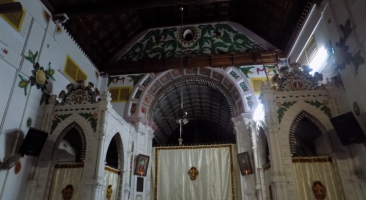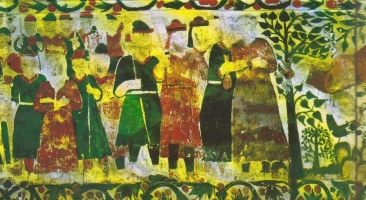Kerala has a thriving Christian community and the church claims a tradition that is almost contemporary to the founders of the religion. Architectural evidence and archaeological evidence for thriving commerce with West Asia, Egypt and other centres of early Christianity are emerging from the Malabar Coast. Perhaps, church art and architecture have been flourishing since then. Christian art includes murals, plaques, furniture, ivory, paintings, textiles, metal objects, wood icons and miscellaneous objects. Paintings executed on plastered wall surfaces are called mural paintings. It is a valued aesthetic art form that effectively portrays the cultural legacy of the region. Kerala has a long history of mural art and the mural paintings in churches probably developed along with the mural tradition of the temples here. The tradition seems to have become prevalent after the arrival of the Portuguese in the fifteenth century and the classical period of the mural art in Kerala is from the fifteenth century to the eighteenth century. The themes depicted here are mainly biblical, providing a spiritual and religious atmosphere to the worshippers. This module looks at the various regional and thematic specificities and continuities in the mural tradition of the churches in Kerala.

Jenee Peter
Jenee Peter has a doctorate degree in Archaeology from Maharaja Sayajirao University of Baroda. She is on the faculty, Department of History, U. C. College. She founded the Centre for Peace Studies and Dialogue. She is a consultant with the Kerala State departments of Tourism, Archaeology and Muziris Heritage Project and has participated in the excavations at Kottapuram and Pattanam.


